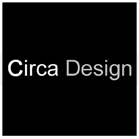Sold! The Inside Story of How Ireland Got Bitten By the Art Bug
John Burns
Red Rock Press, €22.99
This is a book about money. It's also a book about ego, and status anxiety, and deception, but at the core it's about money and how to create it. There are little interludes peppered throughout about our major artists and these constitute tidy primers for those looking to learn about Irish art. But again they are only interludes in a fascinating trawl through the history of selling and buying art for huge sums, in a country, ironically, not renowned for anything but being little more than mediocre when it comes to the brush and palette.
It starts with art owners selling work abroad to avoid paying capital gains tax in the late '80s. Then, struck by pangs of conscience, and an interest fuelled by a sense of patriotism, businessmen like Tony Ryan start repatriating work. The first art boom kicks in, fuelled by rich men with conservative tastes. That's when things become interesting, and Burns starts introducing us to a cast of characters who all share a remarkable sense of guile.
Take for instance Alan Hobart, "Mr Muscles", the founder of Pym's Gallery in London. A man who would hang Irish paintings beside those of much better-known European artists of a higher value, in the gallant hope that "rich Irish people would be inspired to buy great Irish paintings".
Then there's Bernard Williams of Christies, who talks about changing the title of a William Conor painting to make it more appealing to Northern Protestants. As Williams puts it, "we've changed it into an interdenominational picture".
Burns describes how the Irish auction scene really heated up with the arrival of auctioneer Ian Whyte.
Whyte became the biggest-selling auctioneer within four years, and there is a marvellous description of him buying up art like a man snapping apples from their stems supermarket-style. Meanwhile his main rivals, Adams and John De Vere White, are left trailing in his wake, and we're treated to some wonderfully catty comments from people like Bernard Williams who gets in a huff over Whyte daring to use the internet as a marketing tool: "He has to spend €350,000 a year advertising, whereas we have the name behind us," he snorts.
While all of this is very enjoyable, the book really gets into its stride when talking about artists and how they publicise their work.
There is a brilliant dissection of how Louis Le Brocquy became a million-selling artist late in his career. We also learn about Mark O'Neill, a self-confessed 'chocolate boxy' artist whose work sold for six-figure sums over the course of two auctions in 2006 and 2007.
There is barely disguised disdain for Kevin Sharkey's assembly line approach, and even some of the footnotes are a joy: "'And Saatchi doesn't buy just anybody,' Sharkey told Podge and Rodge on RTÉ television. The puppets agreed."
At one point you might even find yourself cheering for Kevin Myers, who famously described a catalogue entry for photo-realist artist John Doherty as: "poo squeezed out of a constipated alligator's sit-upon".
Burns also examines the publicity machine behind eccentric artist John Kingerlee. There is a page with an image from Kingerlee's 'revolutionary' Grids series which looks like scratchings made on a pale puke green lavatory wall. The painting sold for €60,000 in 2005.
Burns describes the standard technique of auctioneers who pluck figures from the air before reaching the reserve price on an item, and the more you read the more you realise that this book is about manipulation, spin, the creation of theatre, and ultimately about how to make filthy lucre from paintings which aren't really much good.
This is a hugely entertaining and intelligent book, serving as a prism through which to view the insanity of the Celtic Tiger, and the culture of an industry adept at self-perpetuation.




 del.icio.us
del.icio.us digg
digg Facebook
Facebook







